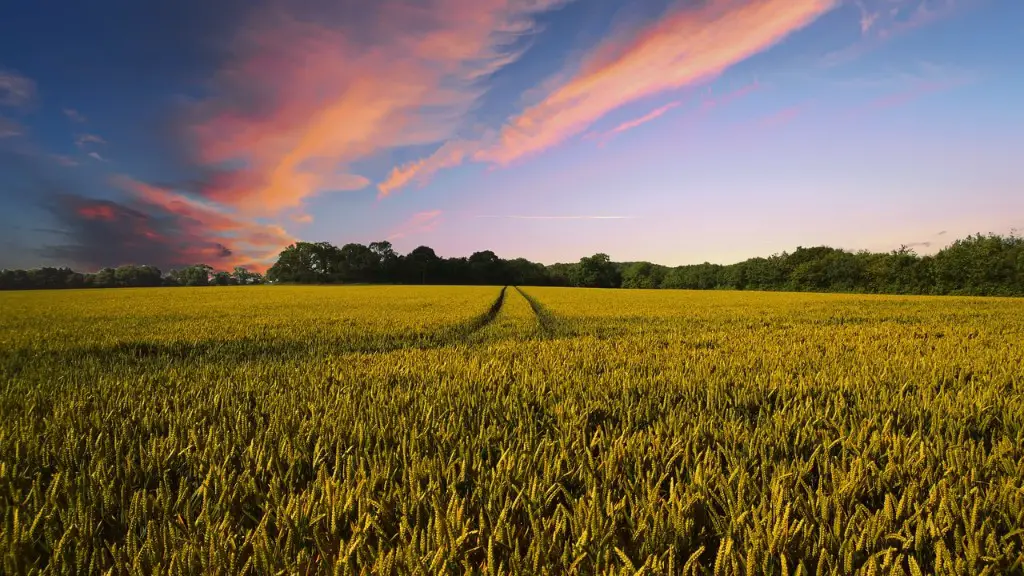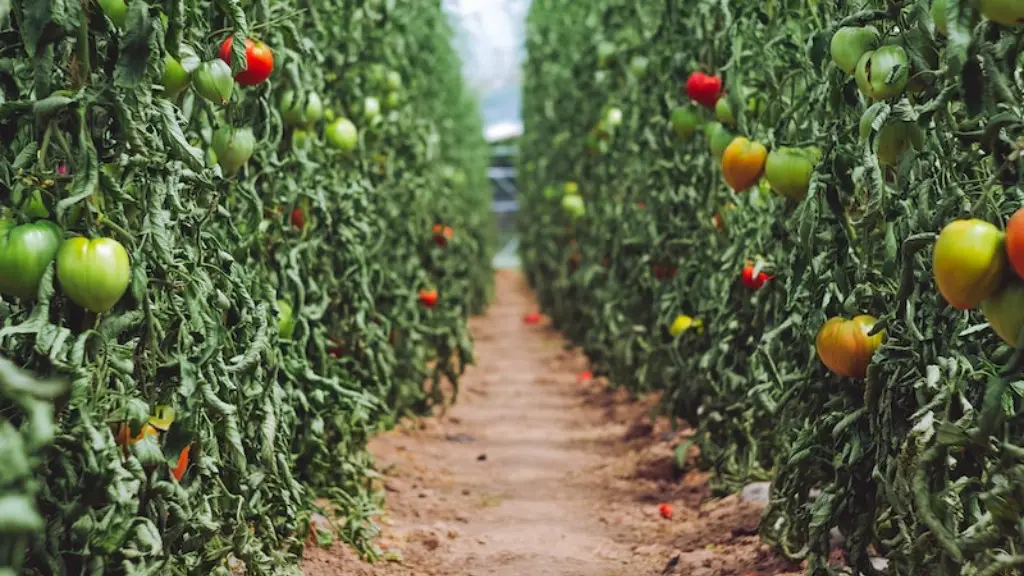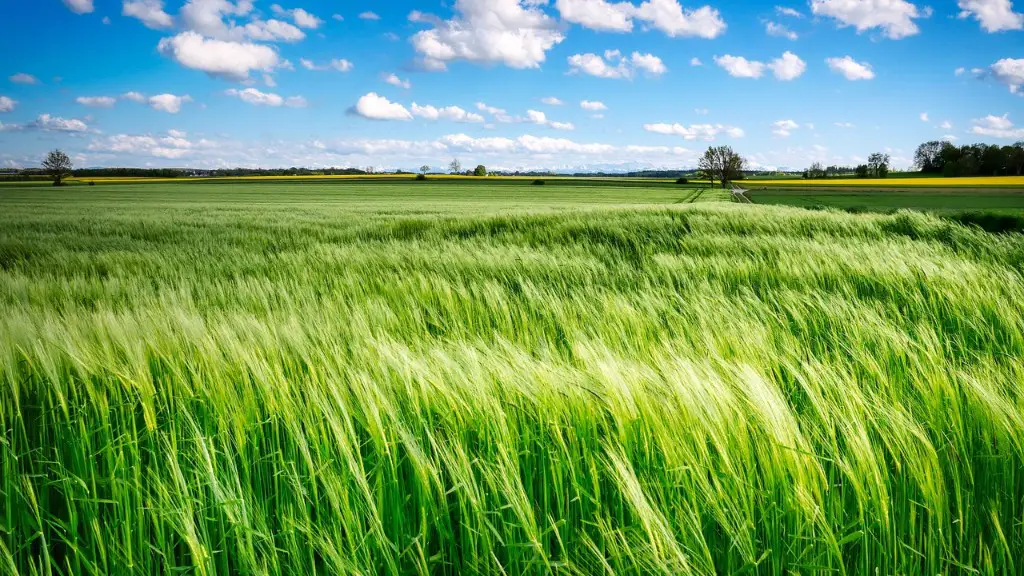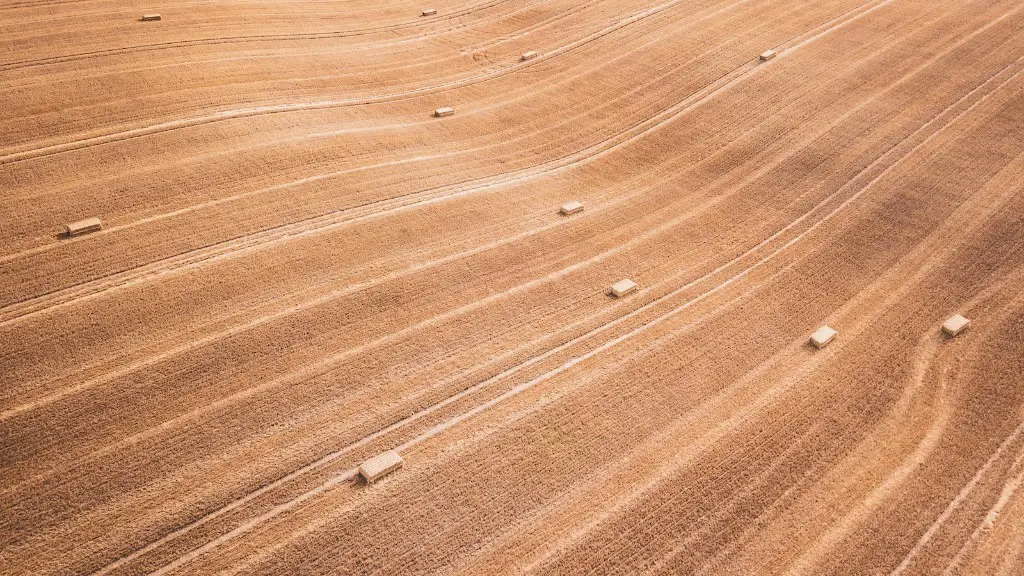Agriculture is an ancient practice that can be traced back to the Neolithic period. By the beginning of this period, humans had developed strategies and techniques to improve their crops and raise livestock. The development of agriculture gave rise to a new way of life, allowing people to settle in one place rather than migrating in search of food. In this article, I will explore where the first agriculture developed.
Microscope studies have revealed evidence of agriculture in the Near East dating back to the early Neolithic era. It is thought that the earliest farmers began by gathering wild plants and then started planting crops. This type of agriculture is most associated with the Natufian culture, which emerged in the Levant around 7000 BC. The Natufians practiced “slash and burn” agriculture as well as hunting and gathering.
The Fertile Crescent is believed to be the heart of early agriculture. This region lies in a part of the Middle East between the Tigris and Euphrates rivers, and it is the birthplace of some of the world’s oldest known crops such as wheat, barley, lentils, chickpeas, and flax. By 6000 BC, the region was undergoing a major agricultural revolution with the introduction of irrigation systems, crop rotation, and animal husbandry.
Agriculture has also been found in other regions of the world. In China, archaeological evidence shows that rice cultivation began in the Yangtze Valley around 8500 BC. It is thought that this type of farming was part of an ancient trading route from Southeast Asia and eventually spread to other parts of China. In the Americas, corn and squash were the primary crops cultivated by various native societies, and many of these techniques have survived until today.
The development of agriculture changed the lives of humans around the world. It allowed us to settle in one place, develop cities and societies, and even led to advances in commerce, art, and technology. Therefore, it is no surprise that the origin of agriculture is a source of fascination for many historians today.
The Effects of Agriculture in the Near East
The development of agriculture had a profound impact on the Near East. It allowed people to stay longer in a single location, resulting in the growth of more complex societies and cultures. Over time, cities and empires emerged, and trade and commerce flourished. Agriculture also led to advances in technologies such as irrigation, animal husbandry, and crop rotation.
The monotony of farming also led to a variety of rituals and festivals, which celebrated the harvest of crops and the beginning of a new year. These events allowed people to come together and enjoy each other’s company. In addition, agriculture provided sustenance for the growing populations and ushered in a period of stability and prosperity.
Agriculture also brought about unforeseen consequences. It caused a division of labour and led to social hierarchies and inequalities. The new way of life was more vulnerable to famines and environmental catastrophes. In addition, the canals and irrigation systems led to the spread of disease and an increased reliance on imports and exports.
Overall, the advent of agriculture in the Near East had both positive and negative effects. It allowed people to settle in one place and build large, sophisticated societies, but it also led to social and environmental issues. This history continues to shape our lives today and serves as a reminder of the complex relationship between humans and their environment.
Agriculture in Other Regions
Agriculture has been found all around the world, from China and India to the Americas. In India, barley, wheat, and millet have been cultivated since 7000 BC. The Incas of Peru developed a sophisticated form of agriculture utilizing terraces and canals for irrigation. In Africa, sorghum and millet were the main crops in sub-Saharan areas, while in North Africa, wheat and barley were the staples.
Each civilization developed its own set of techniques and strategies to maximize crop yields. In some cases, complex systems such as aqueducts and reservoirs were built to manage water and increase productivity. Research suggests that a combination of traditional farming techniques and new knowledge allowed societies to increase their crop yields significantly.
The development of agriculture in different regions of the world also had a profound impact on the societies that developed it. It changed the way people lived and allowed for the emergence of complex civilizations. Trade and commerce expanded, ushering in a period of social and economic stability. Agriculture also allowed for an increase in population as people had a reliable source of food.
In conclusion, the development of agriculture had a major impact on our current way of life. It permitted people to settle in one place, build sophisticated societies and civilizations, and expand their horizons. Agriculture is an ancient practice that continues to shape our lives today.
Agricultural Innovations
In addition to providing a stable source of food and sustenance, the development of agriculture also led to technological advancements. Ancient farmers developed numerous tools and innovations to increase efficiency and productivity. Tools such as plows, hoes, and sickles were used to sow and reap crops. Irrigation systems were built to manage water, and crop rotation was utilized to improve soil fertility.
Animal husbandry was also developed during this time. Goats, cattle, sheep, and pigs were domesticated, providing an additional source of food and other goods. These animals also served as transportation and labor tools. In addition, more efficient methods of milling grain were developed and the use of fertilizers and pesticides increased crop yields.
The advent of agriculture also had a major impact on the development of writing systems. The need to keep track of trade, taxes, and livestock made writing an essential tool. As a result, cuneiform, hieroglyphs, and ideograms emerged in the Near East and other parts of the world. This allowed people to transmit information orally and in written form, leading to the emergence of literature, philosophy, and other cultural innovations.
The invention of new tools and technologies had a major impact on the way people lived. It allowed for greater efficiency and productivity, which in turn allowed for the growth of complex civilizations. From plows to irrigation systems, these innovations continue to shape our modern lives.
Agricultural Expansion
The development of agriculture did not just lead to changes in ancient societies. In fact, the advent of agriculture played an important role in the expansion of human populations. As new techniques emerged, people were able to grow more food and sustain larger populations. In addition, agriculture made it possible to explore new territories and settle in unexplored areas of the world.
When people began to farm in the Neolithic era, it led to an increase in human migration. Groups of people began to explore new regions in search of new land and resources. This enabled them to create new and more sophisticated societies and expand their influence. As a result, the ancient world became more interconnected and complex, leading to an age of exploration and discovery.
The development of agriculture has had a major impact on the modern world. It allowed people to settle in one place, build large and complex societies, and explore new regions of the world. As new technologies emerged, humans were able to increase their productivity and sustain larger populations. These innovations continue to shape our lives today.
Agriculture and the Environment
The development of agriculture has had a major impact on the environment. As populations grew, more land was needed to feed the growing population. This often led to deforestation and the destruction of wildlife habitats. In addition, irrigation systems and the expansion of agriculture led to an increased reliance on chemicals and fertilizers, which can be harmful to the environment.
In addition, the monoculture of crops can lead to soil erosion and a decrease in soil fertility. Over-tilling can also lead to a decrease in organic materials in the soil, resulting in the loss of nutrients. The use of chemical pesticides can also lead to the contamination of groundwater and the destruction of ecosystems.
In recent years, there has been an increased effort to focus on sustainable agriculture. This includes the adoption of sustainable farming methods, such as permaculture and agroforestry. These methods reduce the amount of chemical inputs, increase soil fertility, and help to reduce soil erosion. In addition, the use of modern technologies and practices can help to reduce the impact of agriculture on the environment.
The development of agriculture has had both positive and negative effects on the environment. On the one hand, it has allowed us to sustain larger populations and expand our influence and exploration of new regions. On the other hand, it has led to unsustainable practices that can have devastating consequences for both humans and the environment.





